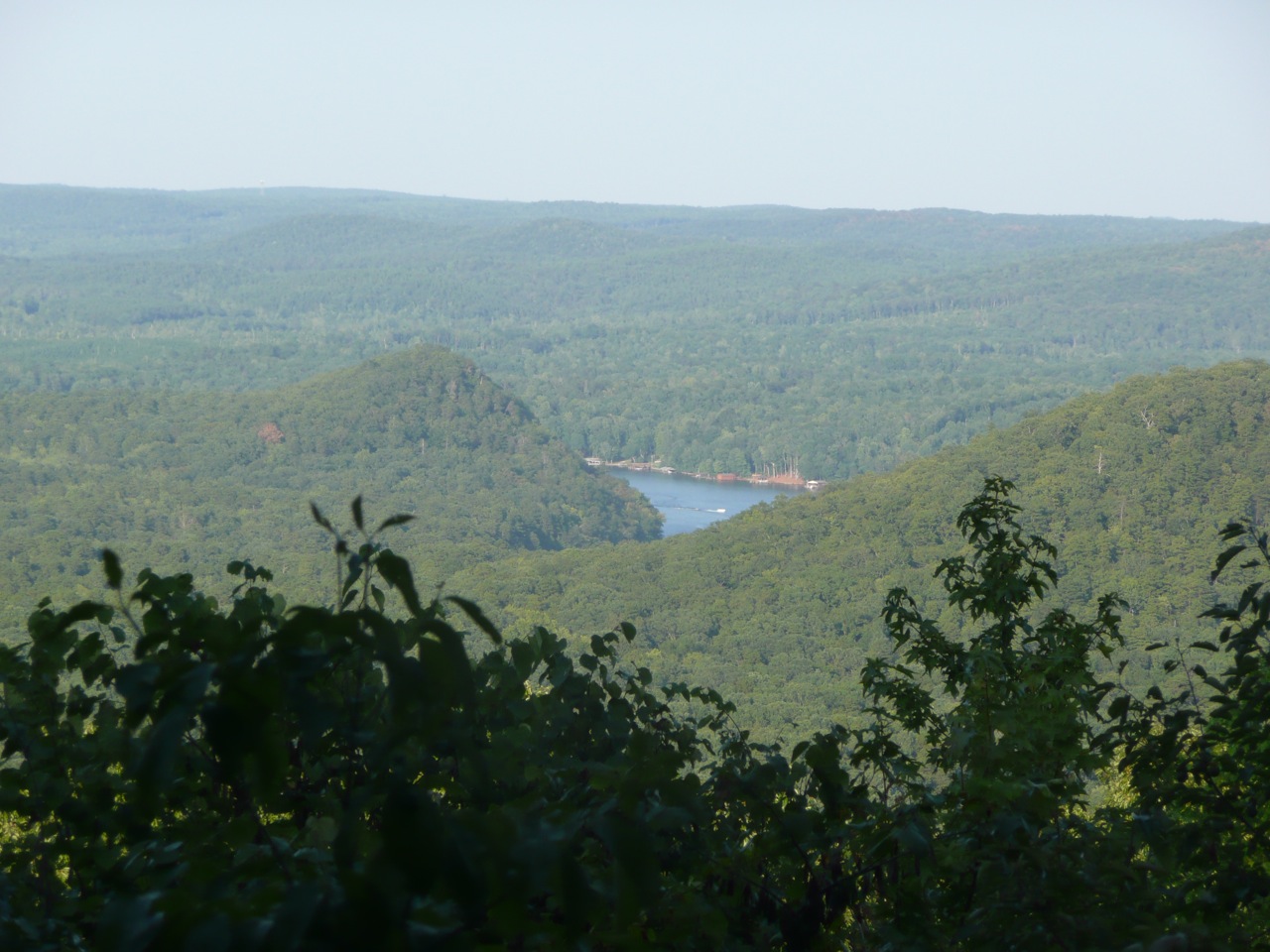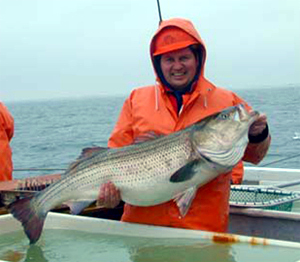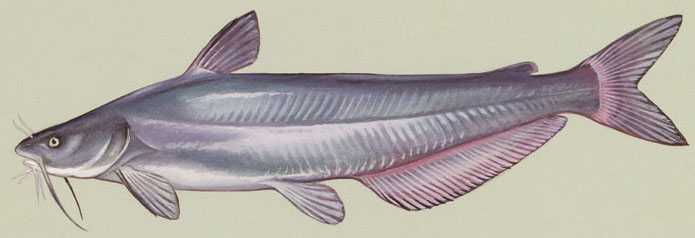|
High Rock Lake
High Rock Lake is a reservoir located on the Yadkin River in central North Carolina in the counties of Davidson and Rowan. Built in 1926-27 by the Tallassee Power Company, a wholly owned subsidiary of the Aluminum Company of America (Alcoa), the lake is the northernmost of a series of four hydroelectric projects designed at the time to support the company’s Badin Works, a large aluminum smelting operation located 16 miles downstream in the community of Badin. After the permanent closing of the Badin Works in 2007, Alcoa continued to operate its Yadkin hydroelectric facilities until selling them to Cube Hydro Carolinas in 2016. At the time of construction, High Rock was the largest reservoir in North Carolina and one of the largest in the United States. When full, its surface covers 15,180 acres (61 km2) with 360 miles (579 km) of shoreline and is 59 feet (18 m) deep at the dam. Normal pool elevation is 624 feet above sea level (655’ 1926 Alcoa datum). Upstrea ... [...More Info...] [...Related Items...] OR: [Wikipedia] [Google] [Baidu] |
Davidson County, North Carolina
Davidson County is a county located in the U.S. state of North Carolina. As of the 2020 census, the population was 168,930. Its county seat is Lexington, and its largest city is Thomasville. Davidson County is included in the Winston-Salem, NC Metropolitan Statistical Area, which is also included in the Greensboro-Winston-Salem- High Point, NC Combined Statistical Area. Parts of Davidson County are in the Yadkin Valley wine region. History The original North Carolina county of this name was created in 1786 what was then the far western portion of North Carolina, with its county seat at Nashville and a territory covering most of what is now Middle Tennessee. When Tennessee was established as a separate state in 1796, this county became Davidson County, Tennessee. The current North Carolina county was formed in 1822 from Rowan County. It was named after Brigadier General William Lee Davidson, an American Revolutionary War general killed at the Battle of Cowan's Ford on ... [...More Info...] [...Related Items...] OR: [Wikipedia] [Google] [Baidu] |
Uwharrie Lakes Region
{{Unreferenced, date=December 2009 The Uwharrie Lakes Region of North Carolina in the United States refers to the lakes created by the damming of the Yadkin and Pee Dee rivers along the western slopes of the ancient Uwharrie Mountains. The region consists of High Rock Lake in the north, followed by Tuckertown Reservoir, Badin Lake, Falls Reservoir, Lake Tillery and finally Blewett Falls Lake in the south. The region is bordered by the Uwharrie National Forest in the east and lies within Stanly, Rowan, Davidson, Montgomery, Anson, and Richmond counties A county is a geographic region of a country used for administrative or other purposesChambers Dictionary, L. Brookes (ed.), 2005, Chambers Harrap Publishers Ltd, Edinburgh in certain modern nations. The term is derived from the Old French .... Geography of North Carolina ... [...More Info...] [...Related Items...] OR: [Wikipedia] [Google] [Baidu] |
Hybrid Striped Bass
A hybrid striped bass, also known as a wiper or whiterock bass, is a hybrid between the striped bass (''Morone saxatilis'') and the white bass (''M. chrysops''). It can be distinguished from the striped bass by broken rather than solid horizontal stripes on the body. Hybrid striped bass are considered better suited for culture in ponds than either parent species because they are more resilient to extremes of temperature and to low dissolved oxygen. They became part of aquaculture in the United States in the late 1980s. Most producers purchase the fish young (as fry or fingerlings) and raise them in freshwater ponds. Currently, about 10 million lb (4.5 million kg) are produced annually in the United States. Hybrid striped bass are used both as a gamefish and a food fish. Hybrid striped bass are produced two different ways. Some of these fish are produced by fertilizing eggs from white bass with sperm Sperm is the male reproductive cell, or gamete, in anisogamous forms o ... [...More Info...] [...Related Items...] OR: [Wikipedia] [Google] [Baidu] |
Striped Bass
The striped bass (''Morone saxatilis''), also called the Atlantic striped bass, striper, linesider, rock, or rockfish, is an anadromous perciform fish of the family Moronidae found primarily along the Atlantic coast of North America. It has also been widely introduced into inland recreational fisheries across the United States. Striped bass found in the Gulf of Mexico are a separate strain referred to as Gulf Coast striped bass. The striped bass is the state fish of Maryland, Rhode Island, and South Carolina, and the state saltwater (marine) fish of New York, New Jersey, Virginia, and New Hampshire. The history of the striped bass fishery in North America dates back to the Colonial period. Many written accounts by some of the first European settlers describe the immense abundance of striped bass, along with alewives, traveling and spawning up most rivers in the coastal Northeast. Morphology and lifespan The striped bass is a typical member of the family Moronidae in s ... [...More Info...] [...Related Items...] OR: [Wikipedia] [Google] [Baidu] |
Shellcracker
The redear sunfish (''Lepomis microlophus''), also known as the shellcracker, Georgia bream, cherry gill, chinquapin, improved bream, rouge ear sunfish and sun perch) is a freshwater fish in the family Centrarchidae and is native to the southeastern United States. Since it is a popular sport fish, it has been introduced to bodies of water all over North America. It is known for its diet of mollusks and snails. Description The redear sunfish generally resembles the bluegill except for coloration and somewhat larger size. The redear sunfish also has faint vertical bars traveling downwards from its dorsal. It is dark-colored dorsally and yellow-green ventrally. The male has a cherry-red edge on its operculum; females have orange coloration in this area. The adult fish are between in length. Max length is , compared to a maximum of about for the bluegill. ''Redear sunfish'' on average reach about , also larger than the average bluegill. Habitat and range Redear sunfish are ... [...More Info...] [...Related Items...] OR: [Wikipedia] [Google] [Baidu] |
Bluegill
The bluegill (''Lepomis macrochirus''), sometimes referred to as "bream", "brim", "sunny", or "copper nose" as is common in Texas, is a species of North American freshwater fish, native to and commonly found in streams, rivers, lakes, ponds and wetlands east of the Rocky Mountains. It is the type species of the genus ''Lepomis'' (true sunfish), from the family Centrarchidae (sunfishes, crappies and black basses) in the order Perciformes (perch-like fish). Bluegills can grow up to long and about . While their color can vary from population to population, they typically have a very distinctive coloring, with deep blue and purple on the face and gill cover, dark olive-colored bands down the side, and a fiery orange to yellow belly. They are omnivorous and will consume anything they can fit in their mouth, but mostly feed on small aquatic insects and baitfishes. The fish are important prey for bass, other larger sunfish, northern pike and muskellunge, walleye, trout, h ... [...More Info...] [...Related Items...] OR: [Wikipedia] [Google] [Baidu] |
Centrarchidae
Centrarchidae, better known as sunfishes, is a family of freshwater ray-finned fish belonging to the order Perciformes (formerly belonging to the deprecated order Centrarchiformes), native only to North America. There are eight universally included genera within the centrarchid family: ''Lepomis'' (true sunfishes), '' Micropterus'' (black basses), ''Pomoxis'' ( crappies), ''Enneacanthus'' (banded sunfishes), ''Centrarchus'' (type genus, consisting solely of the flier ''C. macropterus''), ''Archoplites'' ( Sacramento perch), ''Ambloplites'' (rock basses), and ''Acantharchus'' (mud sunfish). A genetic study in 2012 suggests that the highly distinct pygmy sunfishes of the genus '' Elassoma'' are also centarchids. The centrarchid family comprises 38 identified species, 34 of which are extant. It includes many popular game fishes familiar to North American anglers, such as the rock bass, largemouth bass, bluegill, pumpkinseed, green sunfish and crappies. Most sunfish are h ... [...More Info...] [...Related Items...] OR: [Wikipedia] [Google] [Baidu] |
Crappie
Crappies () are two species of North American freshwater fish of the genus ''Pomoxis'' in the family Centrarchidae (sunfishes). Both species of crappies are popular game fish among recreational anglers. Etymology The genus name ''Pomoxis'' literally means "sharp cover", referring to the fish's spiny gill covers (opercular bones). It is composed of the Greek (, cover) and (, "sharp"). The common name (also spelled ''croppie'' or ''crappé'') derives from the Canadian French , which refers to many different fishes of the sunfish family. Other names for crappie are papermouths, strawberry bass, speckled bass or specks (especially in Michigan), speckled perch, white perch, crappie bass, calico bass (throughout the Middle Atlantic states and New England), and Oswego bass. In Louisiana, it is called sacalait ( frc, sac-à-lait, ), seemingly an allusion to its milky white flesh or silvery skin. The supposed French meaning is, however, folk etymology, because the word is u ... [...More Info...] [...Related Items...] OR: [Wikipedia] [Google] [Baidu] |
Flathead Catfish
The flathead catfish (''Pylodictis olivaris''), also called by several common names including mudcat or shovelhead cat, is a large species of North American freshwater catfish in the family Ictaluridae. It is the only species of the genus ''Pylodictis''. Ranging from the lower Great Lakes region to northern Mexico, it has been widely introduced and is an invasive species in some areas. The closest living relative of the flathead catfish is the much smaller widemouth blindcat, ''Satan eurystomus''. Common names The flathead catfish is also known as the yellow cat, mud cat, Johnnie cat, ''goujon'', ''appaluchion'', ''opelousas'', pied cat and Mississippi cat. In dialect of the Ozark mountains it may be referred to as a "granny cat." Description The flathead catfish is olive colored on its sides and dorsum, with a white to yellow underside. Individuals, particularly young specimens from clearer waters, may be strongly mottled with dark brown to black color. The eyes are ... [...More Info...] [...Related Items...] OR: [Wikipedia] [Google] [Baidu] |
Blue Catfish
The blue catfish (''Ictalurus furcatus'') is the largest species of North American catfish, reaching a length of and a weight of . The typical length is about 25–46 in (64–117 cm). The fish can live to 20 years. The native distribution of blue catfish is primarily in the Mississippi River drainage, including the Missouri, Ohio, Tennessee, and Arkansas Rivers, The Des Moines River in South Central Iowa, and the Rio Grande, and south along the Gulf Coast to Belize and Guatemala. These large catfish have also been introduced in a number of reservoirs and rivers, notably the Santee Cooper lakes of Lake Marion and Lake Moultrie in South Carolina, the James River in Virginia, Powerton Lake in Pekin, Illinois, and Lake Springfield in Springfield, Illinois. This fish is also found in some lakes in Florida. The fish is considered an invasive pest in some areas, particularly the Chesapeake Bay. Blue catfish can tolerate brackish water, thus can colonize along inland waterways of co ... [...More Info...] [...Related Items...] OR: [Wikipedia] [Google] [Baidu] |
Channel Catfish
The channel catfish (''Ictalurus punctatus'') is North America's most numerous catfish species. It is the official fish of Kansas, Missouri, Iowa, Nebraska, and Tennessee, and is informally referred to as a "channel cat". In the United States, they are the most fished catfish species with around 8 million anglers targeting them per year. The popularity of channel catfish for food has contributed to the rapid expansion of aquaculture of this species in the United States. It has also been widely introduced in Europe, Asia and South America, and it is legally considered an invasive species in many countries. Distribution and habitat Channel catfish are native to the Nearctic, being well distributed in lower Canada and the eastern and northern United States, as well as parts of northern Mexico. They have also been introduced into some waters of landlocked Europe (Czech Republic and Romania) and parts of Malaysia and almost as many parts of Indonesia. They thrive in small and large ri ... [...More Info...] [...Related Items...] OR: [Wikipedia] [Google] [Baidu] |
Bassmaster Classic
The Bassmaster Classic (known as the Academy Sports + Outdoors Bassmaster Classic for sponsorship) is a tournament in the sport of professional bass fishing. It was first held in 1971 on Lake Mead, Nevada. Originally it was a fall event, (1971-1983) but it switched to a summer event in 1984 and then to a late winter event in 2006. The event has turned into a three-day spectacle, complete with a theatrical presentation of the weigh-ins and hours of television coverage on FS1 and FOX. The entire event is also streamed live oBassmaster.com Rick Clunn and Kevin VanDam have each won the event four times. Jordan Lee, Bobby Murray, Hank Parker, George Cochran and Hank Cherry have each won twice. First-place money has grown from $10,000 in 1971 to $500,000 in 2006; it was reduced to $300,000 in 2014. Rules and procedures The field has ranged from 24 to 61 anglers. The 2009 competition included women for the first time. 2010 was the last year for women to be given a specific Classic sp ... [...More Info...] [...Related Items...] OR: [Wikipedia] [Google] [Baidu] |








